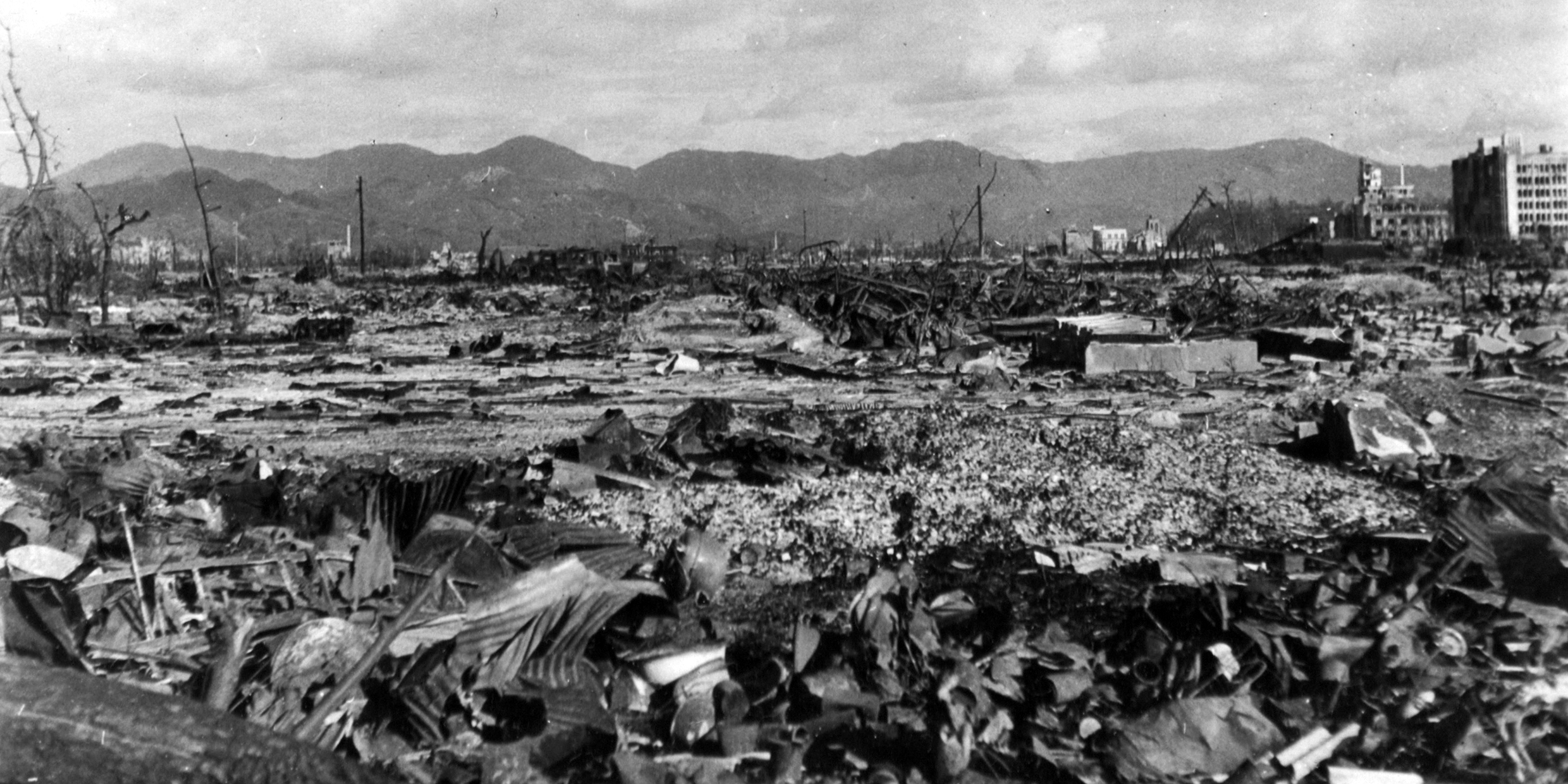Originally published 31 July 1995
It was the defining event of the 20th century, an exclamation point at the middle of the sentence.
At 8:15 a.m., Aug. 6, 1945, the first nuclear weapon used in war was released from a B‑29 flying more than 31,000 feet above Hiroshima, Japan. Forty-three seconds later, the device exploded 1,900 feet above the ground. Within the following three seconds, 100,000 people were obliterated, along with their homes and places of work.
Why does the nuclear destruction of Hiroshima loom so large in our moral consciousness? The slaughters at Verdun and Stalingrad were as terrible. The loss of human life in the Soviet purges, the Holocaust, and the killing fields of Cambodia far exceeds the numbers of atomic deaths. It has been estimated that more than 100 million lives have been lost in the 20th century to man-made violence, a thousand times more than those who died at Hiroshima.
And yet…and yet…
The bombing of Hiroshima is a fault line in history. Like an earthquake, it come out of nowhere, shattering our consciousness. At dawn, Aug. 6, 1945, only a few hundred people in the world grasped that such a weapon of total death was possible. A day later, the entire world knew and understood.
The bomb was the product of some of the brightest minds in history: Einstein, Szilard, Bethe, Fermi, Oppenheimer, von Neumann, Weisskopf, Teller, and others. It was the culmination of a 40-year period of intense discovery, during which the human imagination penetrated to the heart of the atom and to the cores of stars.
Except for their superior intellects, these nuclear scientists were people like ourselves, with the strengths and foibles of humankind. They became temporary warriors because their native or adopted country was pitted in war against cruel and implacable enemies.
To some extent, the bomb-makers were flying by the seat of their pants, trusting their formidable intuitions about nature’s workings. Many of them questioned the morality of nuclear weapons, but there seems no doubt that they found the challenge of building the bomb intellectually satisfying.
J. Robert Oppenheimer, scientific director of the Manhattan project, called the bomb a “technically sweet problem,” meaning, I suppose, that it involved cutting-edge physics and barely-possible mathematics. Enrico Fermi called the project “superb physics.”
The Los Alamos scientists referred to their bomb euphemistically as the “gadget.”
It sounds ironic or even perverse in retrospect, but the dominant motivation of these physicists seems to have been something akin to esthetics. In the laws of the atom they discerned a ravishing beauty. In a time of war, they were called upon as patriots to apply those laws, and sought in the application a kind of elegance.
Technically speaking, the bomb that fell on Hiroshima was “elegant” — a “sweet” culmination of 40 years of unparalleled curiosity and ingenuity.
“For beauty’s nothing but beginning of terror,” wrote the poet Rainer Maria Rilke, and this is why the Hiroshima bomb is the defining event of the 20th century. It is a fulcrum between perfect beauty and perfect terror.
The “gadget” was a ghastly instrument of destruction. It ended the war, perhaps saving hundreds of thousands of lives, but at what cost? The world embarked upon a half-century frenzy of nuclear weapons construction.
A‑bombs. H‑bombs. Neutron bombs. Big bombs. Small bombs. Bombs in airplanes, bombs in missiles, bombs in submarines. Bombs targeted on the great population centers of the Earth.
Single bombs capable of wiping out a thousand Hiroshimas. A hundred times more bombs than needed to annihilate all human life. A colossal push-button machine of death so terrible that it surpasses our ability to comprehend.
In his book The Making of the Atomic Bomb, Richard Rhodes quotes the bomb-making physicist Isidor Rabi: “The frightening thing which we did learn in the course of the war, was…how easy it is to kill people when you put your mind to it. When you turn the resources of modern science to the problem of killing people, you realize how vulnerable they really are.”
At the end of the war, many of the atomic scientists became ardent advocates of peace and disarmament. But the evil genie was not easily put back in the bottle.
Two principles of human activity can be discerned in all of this: 1) What is known cannot be un-known; and 2) what is technologically possible to do will almost certainly be done.
These principles raise further profound questions for all scientists. If knowledge can be used for evil, is knowledge an unfettered good? Is discovery always morally neutral? Do scientists share responsibility for the reckless application of their discoveries? Are there legitimate personal or social constraints upon curiosity?
These questions are not often asked within the scientific community, nor are they easily answered. It is widely assumed that the discovery of nature’s laws is intrinsically good, indeed the highest aspiration of humankind. I have often argued as much.
But beauty and terror are the two faces of knowledge. That is the disquieting lesson of the Hiroshima bomb — and of the 20th century.



